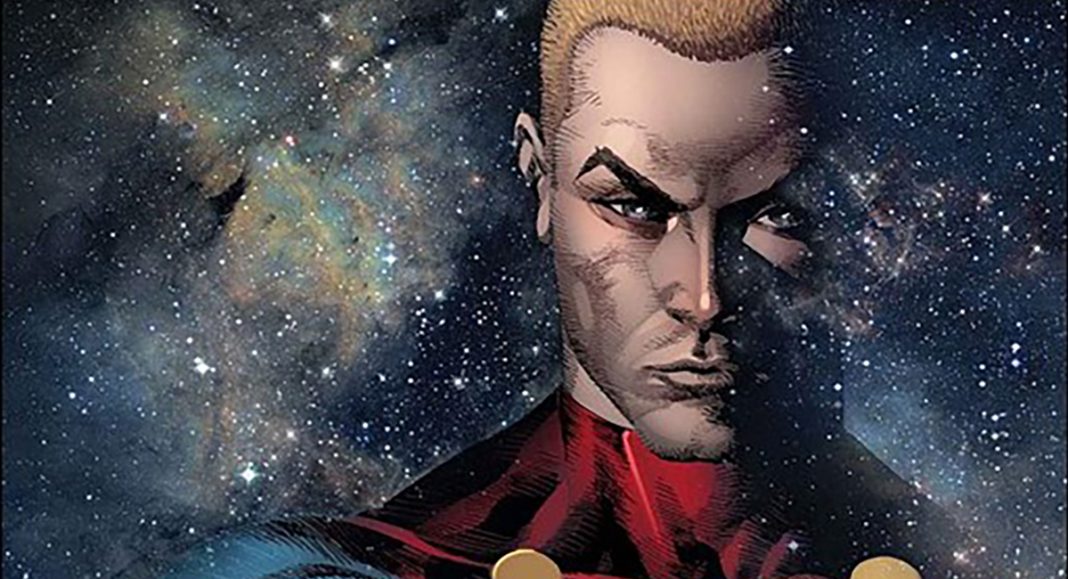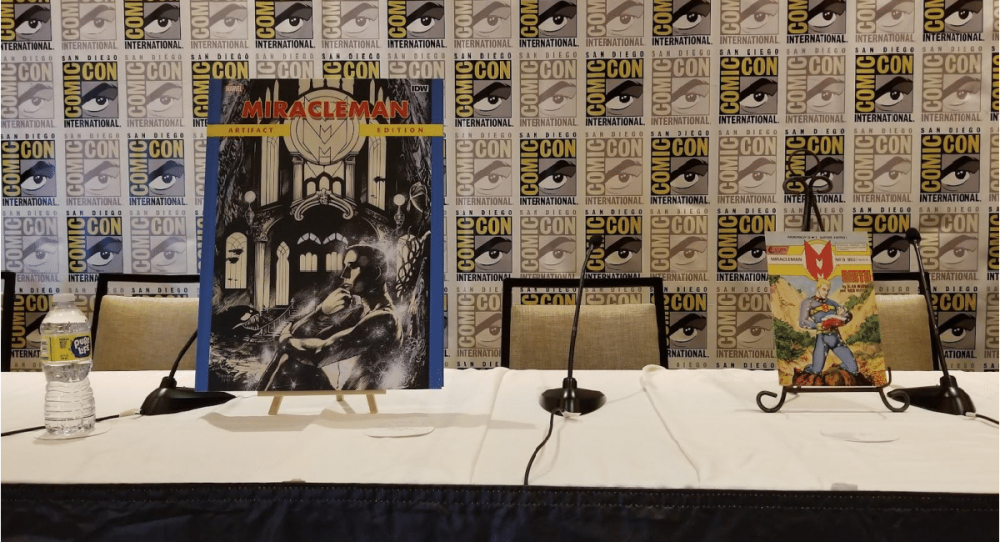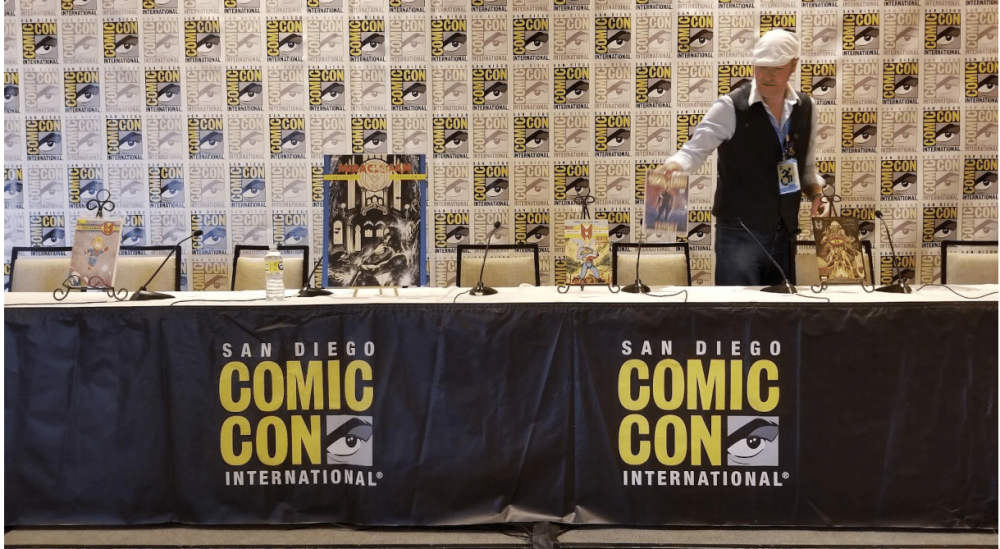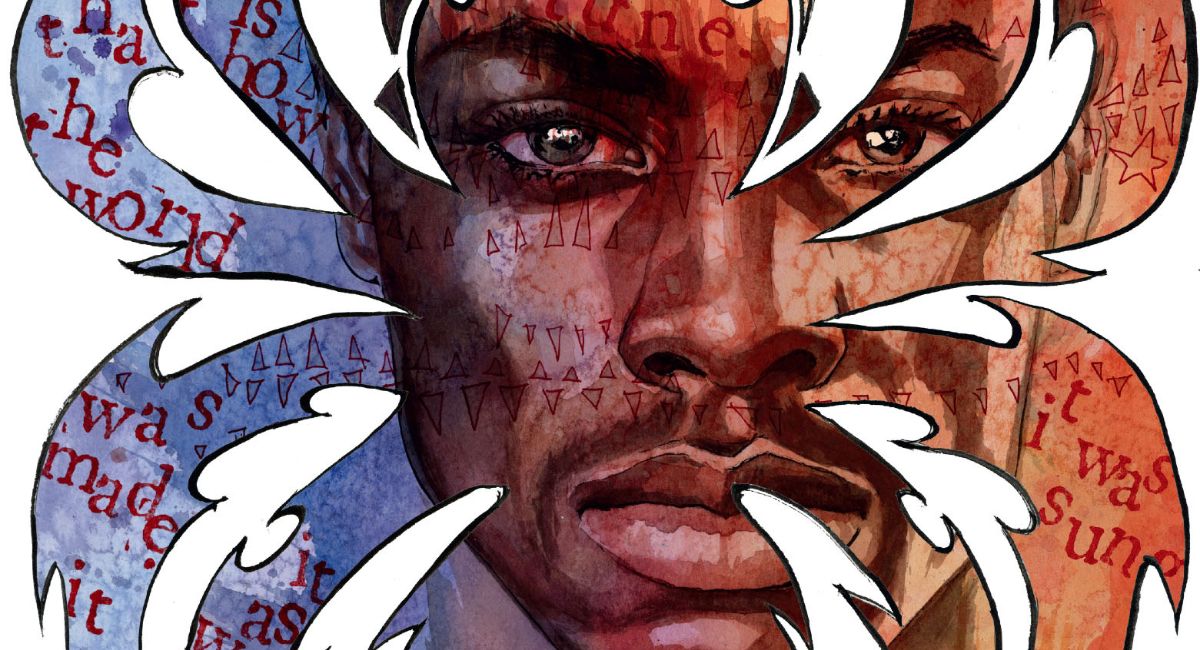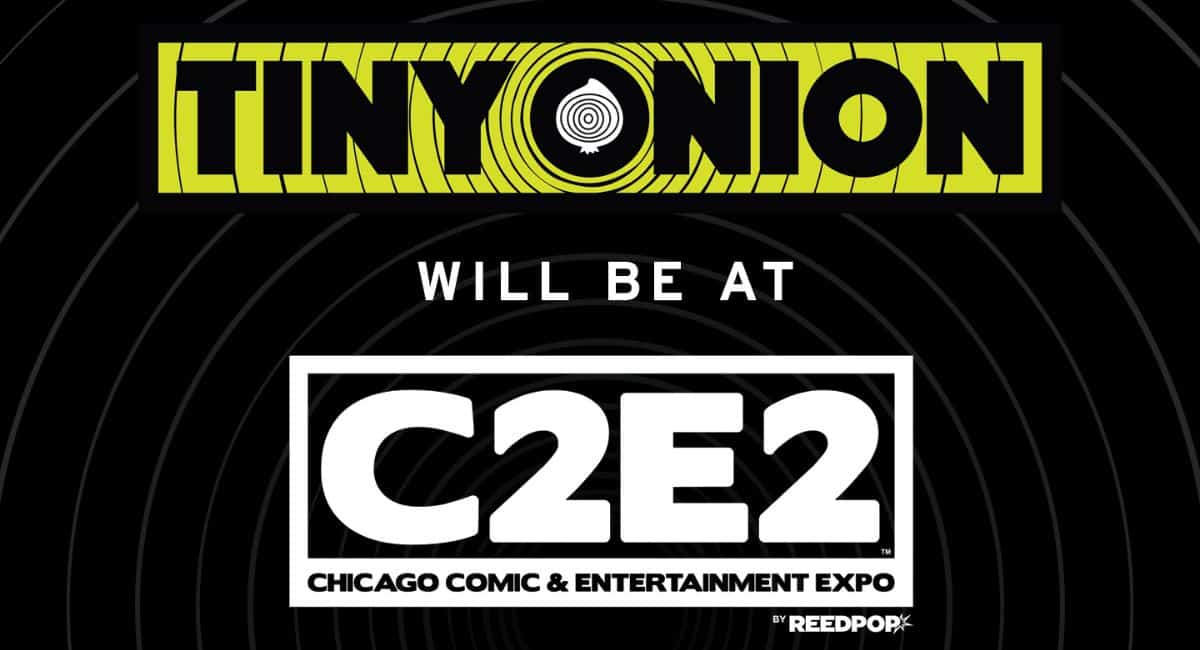By Gabriel Neeb
Escaping from the unspeakable hellscape that is post-Brexit Britain*, internet commentator Leonard Sultana (Twitter: @englishmansdcc) journeyed to San Diego to sing the praises of the character Marvelm-, er, Miracleman to the citizens of America!
Okay, I’m only kidding. But on the afternoon of July 21, Leonard did present a panel about how awesome the character of Miracleman is, called “The Age of Miracleman.”
Leonard was supposed to be joined by writer Donny Cates, however, Mr. Cates was unable to attend the convention. Also, while relaying this unfortunate news, Leonard also said it was highly unlikely Miracleman writer Neil Gaiman would be in attendance.
The panel was originally intended to be Leonard holding up a page of Miracleman art and proclaiming, “ISN’T THIS INCREDIBLE?!” while Donny nodded in agreement.
As it stands, the panel only had too few of these moments and many of them involved pages by the late artist Garry Leach. And those panels were incredible.
As a result, Leonard continued the panel by describing Miracleman as the band that is unsung but everyone is aware of. To this, Leonard began with a history lesson about Miracleman’s strange history, excluding the numerous legal battles (which have their own documentaries on YouTube).
Miracleman began in 1940. Fawcett Comics published Captain Marvel and that character would soon outsell Superman in the US and UK. In 1945, a law prohibited the import of US comics, and Fawcett lost a lawsuit filed by DC (then known as National Periodical Publications) and they had to cease publishing Captain Marvel.
1954 comes around and Mick Angelo starts publishing Captain Marvel stories and just changes the name to Marvelman, introducing a Marvelman Family in 1956. This continues until 1961 when Angelo’s company folded.
Then came 1982 and the beginning of Warrior in the UK. At the recommendation of writer Steve Moore, publisher Dez Skinn hired some neophyte named Alan Moore (Steve Moore: “Alan would give his eyeteeth to pitch the strip”) to write Marvelman stories. Beginning in March 1982, Alan Moore and Garry Leach begin the first of their eight issues, ceasing only because Leach was creating pages TOO intricate for the necessary pace of publishing.
At this point Leonard stopped to tell the audience there would be a tribute panel to Leach on Friday, 22 July at 10 am.
In August 1984, Moore’s run ends on a cliffhanger after a dispute between Dez Skinn and Moore.
Soon though, Eclipse Comics in the United States begins publishing Moore’s stories, leading Moore to start writing new stories ending with Eclipse’s issue #16.
June 1990, Neil Gaiman takes over. Now, Moore felt he was handing Gaiman a “poisoned chalice” of a series as Moore had ended his run of Miracleman (as it had to be called in the US for copyright reasons). Gaiman was undeterred and began plans for three storylines: The Golden Age, The Silver Age, and The Dark Age.
Gaiman get through issue #24 before Eclipse imploded in 1994 (#25 having been completed but never published).
This began the “Age of Limbo” as Leonard described it, where Todd MacFarlane supposedly bought the rights to Eclipse’s assets… which might have included Miracleman… until enough lawsuits were lost by MacFarlane and it was found he had NO rights to the characters or stories.
Which brings us to now, where the final Miracleman story, The Dark Age, is set to be published in late 2022 through Marvel Comics.
Leonard’s love of Miracleman was evident even though he proclaimed himself to not be a full-blown Miracleman expert. It is his hope that this character and stories are given their proper due in the comics pantheon we are all now celebrating.
Miss any of The Beat’s earlier SDCC ’22 Coverage? Find it all here!


